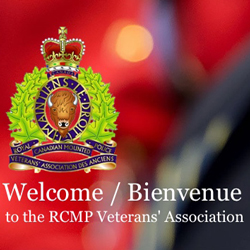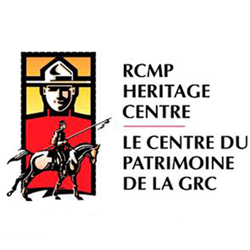1919 – 1920: Major Activities In The Force
In 1916, Commissioner Bowen Perry convinced Prime Minister Sir Robert Borden to cancel the provincial policing contracts for Saskatchewan and Alberta.
This action was undertaken because of the multiple demands being placed on the Force by:
- the two new provincial governments insisting that their new unpopular liquor prohibition legislation be strictly enforced;
- the increased security demands in Canada because of World War I; and
- serving members not re-engaging in the Force and instead volunteering for service overseas in World War I. As such, the Force was 200 members below their approved established total strength.
By 1919, many positive things were occurring in the Force:
- 700 “A” Squadron RNWMP members were returning from Belgium and France after the end of World War I;
- on their return trip to “Depot” Division, 145 “A” Squadron RNWMP members were deployed to Winnipeg to assist other “Depot” Division members in surpressing the “Winnipeg Riot of 1919;”
- upon arriving in Vancouver from their service in Siberia Russia, 167 returning “B” Squadron RNWMP members assisted the Vancouver Police department in surpressing riots in Vancouver. After Vancouver, these members returned to “Depot” Division to be demobilized from the Canadian Army. Many of these members took their discharge from the Force while the rest in the Force and were deployed either to Lethbridge or Brandon Manitoba; and
- The federal government decided to increase the role and responsibilities of the Force by merging the responsibilities and members of the Dominion Police. In so doing, the name of the Force was changed to the Royal Canadian Mounted Police (RCMP). In so doing, the headquarters of the Force shifted from “Depot” Division in Regina to the nation’s capital – Ottawa. With this change in headquarters location, 160 members were transferred to Ottawa. With these changes, the Force became our national police force.
With this expanded role and responsibilities for the Force, new applicants were being trained at “Depot” Division.
Recently, Veteran Doug Madill provided us a insight into the training in the fall of 1919. This insight was provided by Doug obtaining the RNWMP “Depot” Training notebook of Constable Theodore Harris Tunstall (Reg. #8839). Tunstall had joined the Force on October 25, 1919. Prior to joining the Force, he had served in World War I (1916 to 1918) with the Fort Gary Horse Regiment in Western Europe.
The following is a photograph of the exterior of Constable Tunstall’s notebook.

Photograph of the “Depot” Division training notebook of Cst. T.H. Turnstall – RNWMP member (Source of photo – Doug Madill)
From this notebook, we have included the following extracts which are quite revealing compared to what members are taught at “Depot” Division today.
“From February 1, 1920, the RNWMP will be known as the RCMP.
Organization of the RCMP headquarters of the Force is Ottawa. Commissioner of the Force is in command and is responsible to the minister for the conduct of the Force. The strength at present 2,500 officers, NCOs and men.
Members of the Force must always be courteous in public their employees, when when asked for information and assistance to give it promptly. They must get into arguments on political matters taking no part whatever. They must always be neatly dressed – the honour of the Force is their first consideration, you will find many people in the country ask you what your duties are, explain to them if you have time.

Photograph of RNWMP recruits at “Depot” Division being inspected by Supt. George Worsley – Commanding Officer of “Depot” (Source of photo – Vancouver DIvision – RCMP Veterans’ Association)
Outpost Duty
All Mounted Policemen on detachment work should see that their outposts and other buildings are at all times neat and clean all saddlery to be hung up and soap or oiled but not boot polished, that horses are well groomed and have their feet in good conditions, they must also take care of themselves especially their clothes which must be regulations, so that on his tour of inspection, the officer will have no fault to find, all reports are to be in six copies type written, and Police expenses in two copies, Constables if rudely treated are not justified in retaliating all duties must be performed with firmness and moderation.

1916 – Photograph of RNWMP members standing infront of Swift Current Subdivision building. Typical building and dress for members of this time period (Source of photo – Sheldon Boles).
A Constable must not allow himself to be moved or excited by any language or threats however insolent the cooler he keeps himself, the more power he will have over his assailant. Idle or silly remarks are unworthy of notice.
Constables should make it a point to see and hear all and to talk as little as possible about their business.
To enable him to speak quite confidentially and to prevent the possibility of his evidence being shaken, he is to jot down at the time in his memorandum book dates and other particulars respecting arrests or occurrences to which he can always refer.”

1917 – Photograph of “Depot” Division’s “C” Block and the Chapel with front of “A” Block on the right side of the photograph. (Source of photo – Vancouver Division – RCMP Veterans’ Association).

1919 – Photograph of RNWMP recruits at “Depot” Division. Photograph was taken inside “C” Block. (Source of photo – Vancouver Division of the RCMP Veterans’ Association)in 1919).
After graduating from “Depot” Division, Constable Tunstall was transferred to Saskatchewan and left the Force in 1922. However, he re-engaged in 1925 and stayed until March 10, 1927.
It would appear that Constable Tunstall had developed a bit of an ‘attitude problem‘ with his supervisors which probably attributed to his leaving the Force. It was charged and convicted in Service Court by Superintendent George Jennings (previously the Office Commanding “A” Squadron RNWMP during World War I):
26-09-17 SC Disobedience – Fine $2.00
26-10-04 SC Insolence – Fine $1.00
27-02-15 SC Absence – Fine $5.00
As in the past and into the future, “Depot” Division will be the home of the Force and where new members are indoctrinated into a career of policing.


 July 3, 2013
July 3, 2013 








